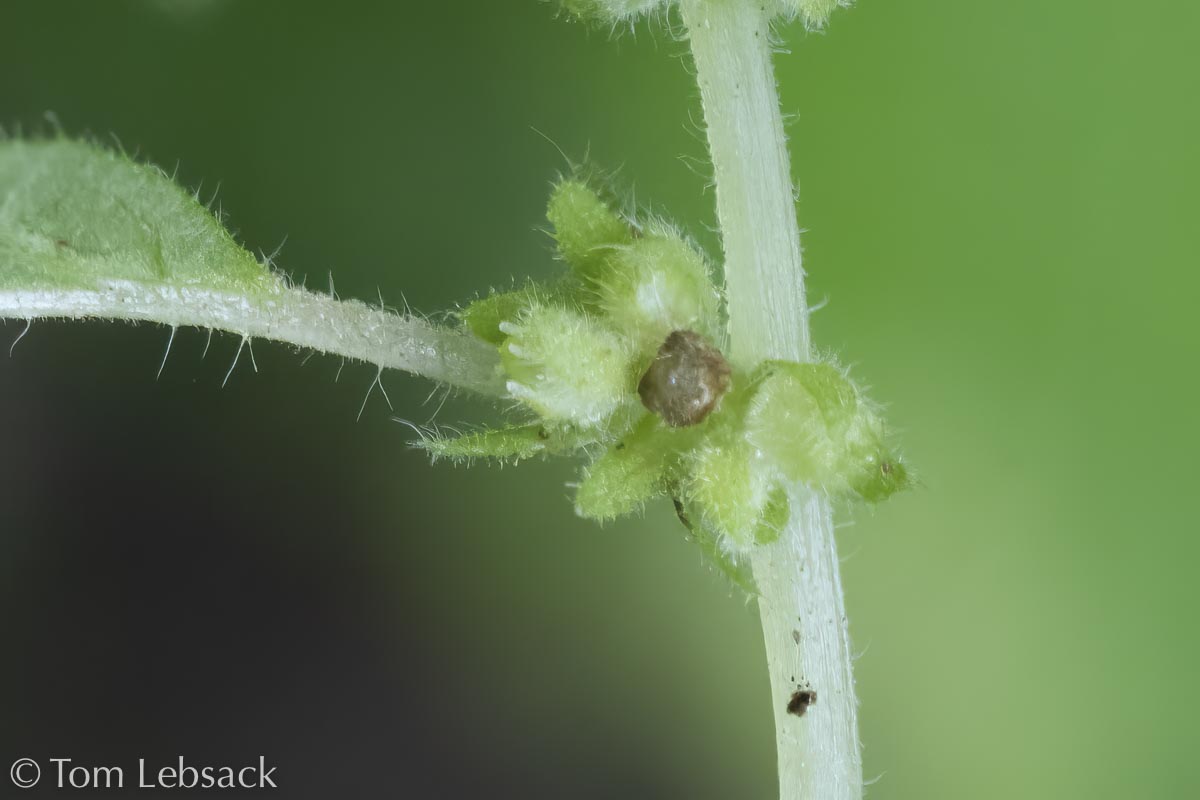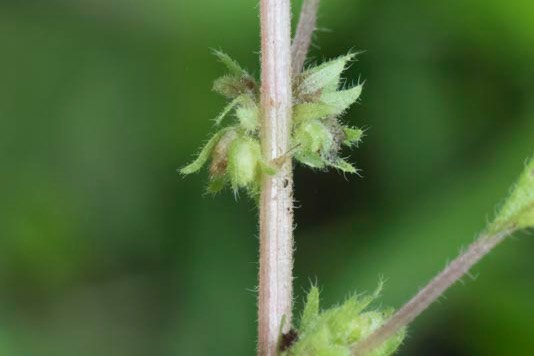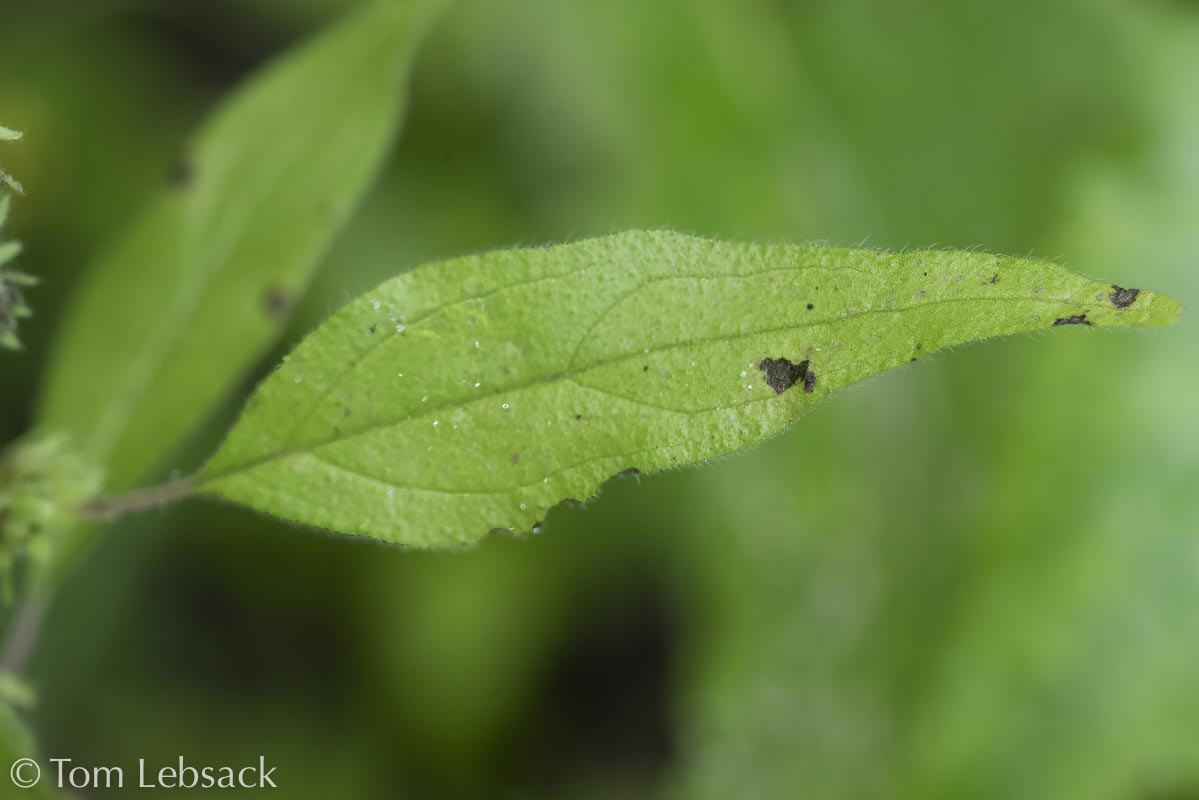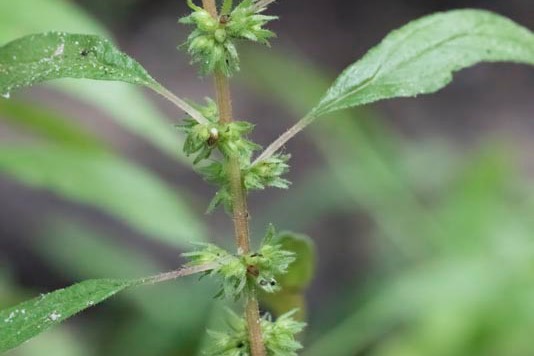Texas Wildbuds
Parietaria pensylvanica
(Pennsylvania Pellitory)
| Scientific Name | Parietaria pensylvanica | USDA PLANTS Symbol | PAPE5 |
| Common Name | Pennsylvania pellitory | ITIS Taxonomic Serial No. | 19169 |
| Family | Urticaceae (Nettle) | SEINet Reference |
Click Here |
| Description | Habitat: Various soils in shady areas, along fences, under hedges, or bare areas under trees, waste areas. Plant: Annual with slender, erect, ascendant or reclining stems 4 to 16 inches long; generally considered a weed. Leaves: Thin, alternate, elliptic to lanceolate or oblong to ovate blades 3/4 to 2-3/4 inches long and up to 1/2-inch wide, with a narrow wedge-shaped bases; on slender petioles; smooth edges. Inflorescence: Compact clusters of tiny, inconspicuous green flowers in the axils of the mid- and upper leaves with 4 tepals less than 0.2 inches long, and 4 stamens; cluster is surrounded by a small, hairy linear to lanceolate bracts about 0.2 inches long. Bloom Period: March to May. References: "Manual of the Vascular Plants of Texas" by Correll and Johnston, SEINet and Minnesota Wildflowers. |
BONAP Distribution Map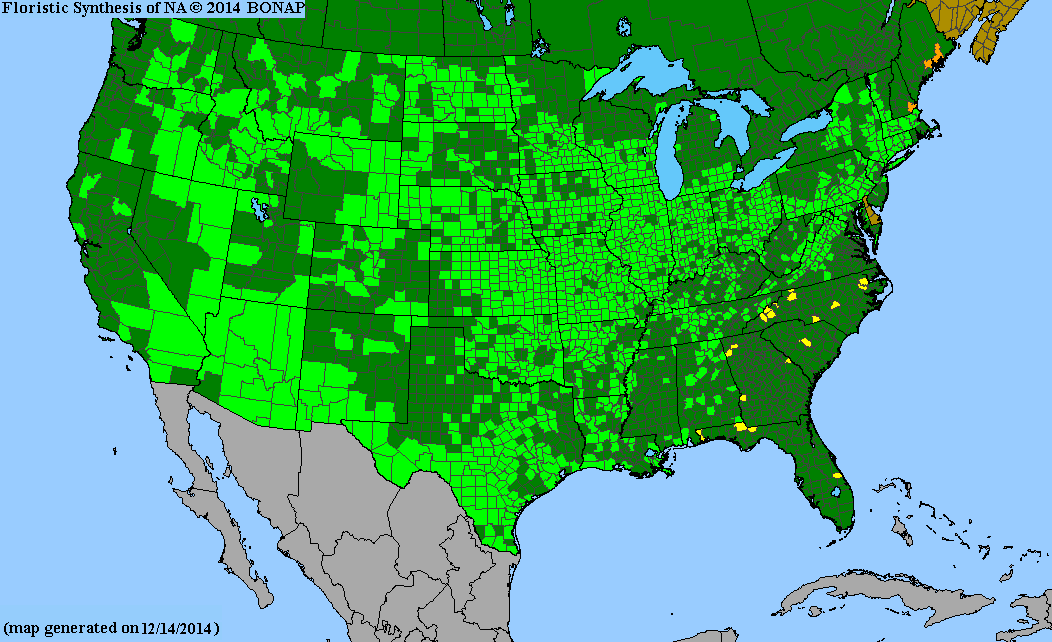 Map Color Key Map Color Key |
Texas Status: Native |
Banner photo of Castilleja indivisa and Lupinus ssp. taken along FM 1323 north of Johnson City, Blanco County
© Tom Lebsack 2025
Every attempt is made to provide accurate, up-to-date, and relevant information, but the completeness or accuracy of any information presented on this website cannot be guaranteed. I use authoritative references to insure high standards of accuracy and review and update the information frequently.
